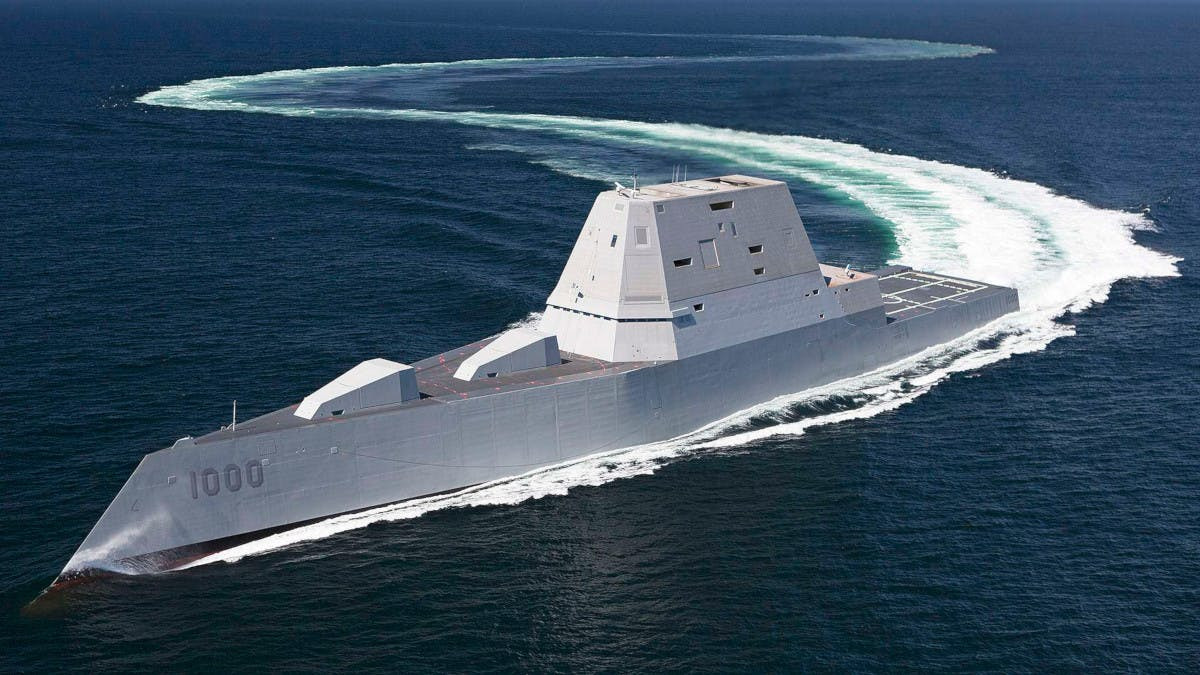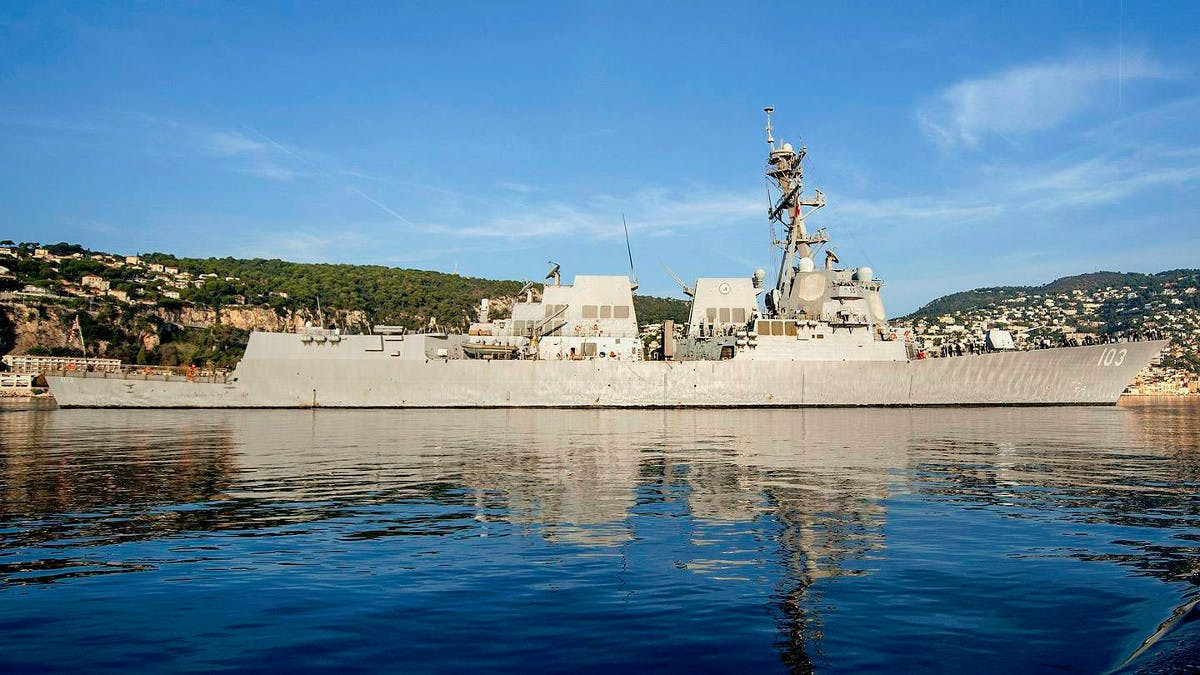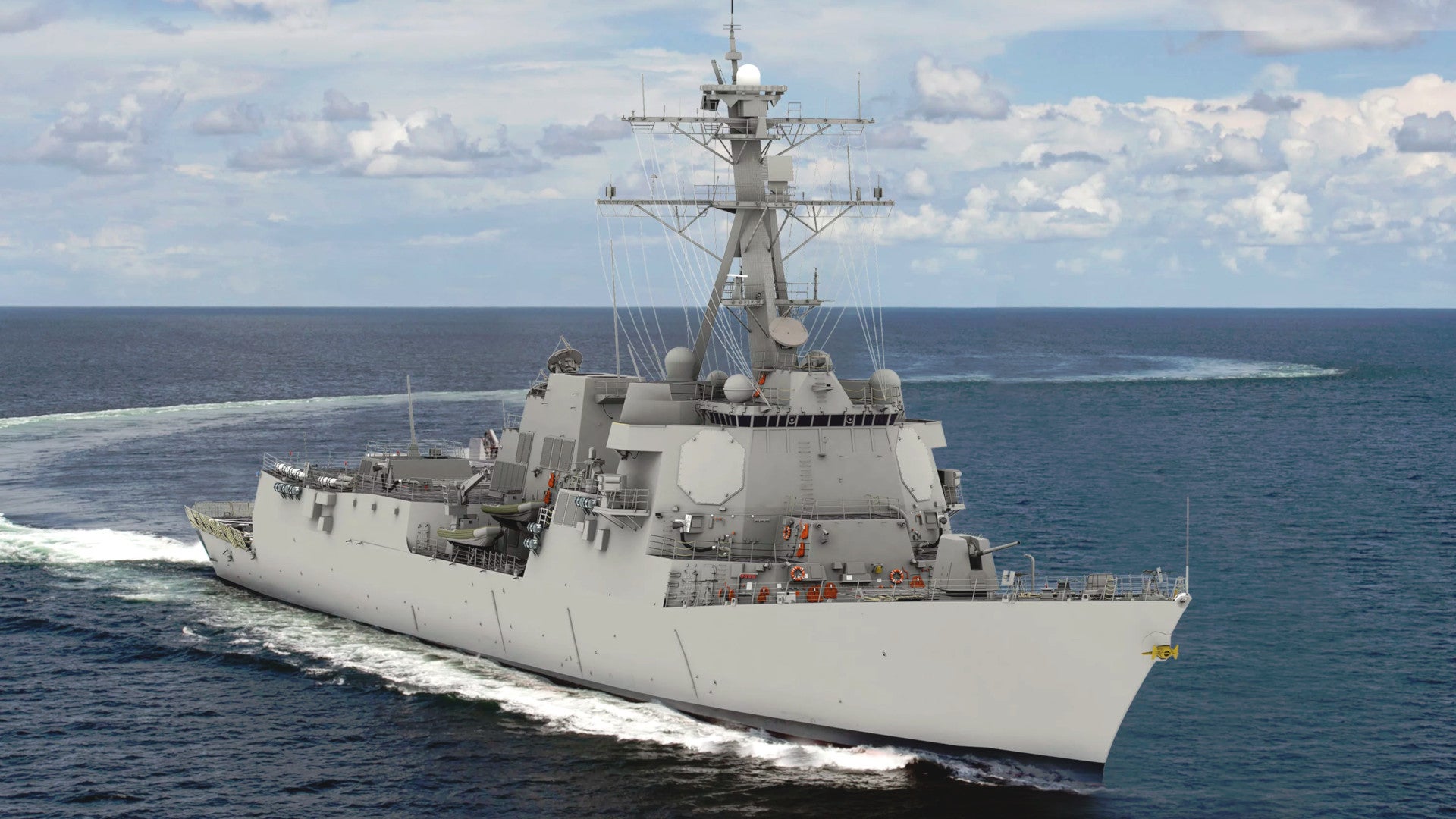The U.S. Navy says that it is considering purchases of a new derivative of the Arleigh Burke class destroyer that is even more advanced than the up-coming Flight III versions. This comes as the service admits that it might not even begin buying its future Large Surface Combatants, or LSCs, which it expects to replace its some of its Arleigh Burkes and all of its Ticonderoga class cruisers, until 2026.
U.S. Navy Rear Admiral Bill Galinis, Program Executive Officer for Ships at Naval Sea Systems Command (NAVSEA), revealed these new details in a panel discussion at the American Society of Naval Engineers’ annual Fleet Maintenance and Modernization Symposium, which began on Aug. 7, 2019, and in a subsequent interview with USNI News. At present, the Navy plans to buy 13 Flight III Arleigh Burkes through the 2025 Fiscal Year. The Service had expected to begin ordering LSCs in 2023, but by March 2019 this schedule had already gotten pushed back.
“We’ve kind of notionally put a target date of sometime in 2026 or so, give or take, for the Large Surface Combatant, but I would tell you that’s not set in stone,” Galinis told USNI News. “The current force structure assessment that’s ongoing is going to also play into those conversations, and we won’t get that until this fall.”
“We’re even considering right now, as we have these conceptual discussions on the Large Surface Combatant, do we need something beyond even a Flight III on the 51s?” the officer had asked rhetorically during the panel discussion. “And again, I tell people, the budget always gets a vote, so you’ve got to think about what the Navy is doing over the next five to 10 years in terms of ship construction.”

In March 2019, the Navy had released latest long-term shipbuilding plan, which included an aggressive set of plans to get the service to its long-standing goal of 355 ships by 2034. This included the service’s planned acquisition of a new class of guided missile frigates, the Colombia class ballistic missile submarines, additional Ford class aircraft carriers, and much more. You can read The War Zone‘s deep analysis of the shipbuilding plan here.
The LSC is another part of this discussion and any delays in purchasing and deploying those ships could impact the Navy’s ability to reach its 355-ship target. The service first began talking publicly about these proposed new surface ships in any real detail in 2018 and released requests for information to shipbuilders and systems integrators in February 2019.
At that time, the Navy made it clear that it wanted the LSCs to use the same AN/SPY-6 Air and Missile Defense Radar (AMDR) as the Flight III Arleigh Burkes, as well as the latest iteration of the Aegis Combat System, which will also be found first on those destroyers. There also needs to be “Additional capacity for an embarked warfare commander and staff,” according to the contracting announcement. This latter capability is what sets the Ticonderogas apart from the existing Arleigh Burkes.
The video below gives an overview of the AN/SPY-6(V)1 AMDR that will go on the Flight III Arleigh Burke-class ships.

The Navy wants the ships to have an improved “Vertical Launch System to accommodate longer and larger diameter missiles for increased speed and range of weapons,” too. There is also a demand for a 360-degree defensive system suite using directed energy weapons, such as lasers or high power microwaves, to defeat a variety of threats, including incoming missiles and small unmanned aircraft.
Perhaps most importantly, the Navy wants a ship with “increased flexibility/adaptability” to make it easier to maintain and replace existing systems, as well upgrade them in the future. The service similarly called for an initial design that had features to reduce the ship’s radar cross-section and other signatures and that could accommodate further signature reductions in the future.
Beyond these requirements, the Navy has offered little additional detail about what it expects the ships to look like or what capabilities they might have. Months after posting the request for information, the service says it still working on laying out its basic requirements.
“It’s a question of how much speed do you need, how much speed can you afford, how much do you want. How much signature are you willing to pay for? What payloads are you going to put in?” U.S. Navy Rear Admiral Gene Black, the service’s Director of Surface Warfare, said at Surface Navy Association gathering in July 2019. “The things I know: I want a big sensor, I need big computing power, and I want some big magazines. Beyond that, we’re not entirely sure.”

Unfortunately, it’s not clear if something like a Flight IV Arleigh Burke could help bridge the gap between the Flight III ships and the new LSC. The original design dates back to the 1980s. More than a year ago, Rear Admiral Galinis made it clear that the Navy was of the opinion that the Flight III design had hit “naval architectural limits of the … hullform.”
The Flight IIIs are already substantially different from their earlier cousins, with a longer and stronger hull and a more robust deckhouse to accommodate the AN/SPY-6. In all, the new derivative involved changes to 50 percent of the technical drawings associated with the Aleigh Burke class. The Navy has already reached the same kind of developmental end state with the Ticonderoga class, which features a derivative of the now-retired Spruance-class destroyer‘s hullform. Those cruisers are known to be overloaded and prone to persistent cracking in their aluminum superstructures that is costly and time consuming to repair.
There may be some possibility of miniaturizing or otherwise reducing the size and weight of certain existing components to create more trade space within the Flight III design. However, it may be difficult to make any serious changes to the size and weight of various large systems, such as vertical launch system arrays, which need to be able to accommodate increasingly larger missiles, or the propulsion system.
A program to develop an improved integrated electric propulsion system for existing Arleigh Burke destroyers, a potentially space-saving and maintenance reducing effort, was a resounding failure and the Navy abandoned the plan last year. Though the Navy had considered using a similar propulsion arrangement on the Flight III ships, in the end, these upcoming destroyers will have three uprated generators to provide necessary additional power, not an integrated electric system. It is worth noting that members of the House of Representatives have sought to include language in the annual defense policy bill, or National Defense Authorization Act, for the 2020 Fiscal Year, that would compel the Navy to resume work on an integrated propulsion system upgrade for the Arleigh Burkes.

Whatever the Navy might manage to add onto a new subclass of the ships, one of the biggest issues will be how to power it all. The Arleigh Burke is effectively maxed out when it comes to power generation already. The main reason the planned propulsion system upgrade failed was that it simply could not keep all of the Arleigh Burke‘s vital systems running at once.
Advanced guided missile destroyers have notoriously voracious appetites for power and this will only increase times goes on. New radars and other sensors, as well as directed energy weapons, need significant amounts of juice, especially when they all have to be working at the same time in a combat situation.
“We’re looking at the timing,” Galinis told USNI News, referring to the schedule for the LSC compared to other shipbuilding programs. “We know we have to recapitalize the surface fleet, but when does that kind of fit in, and if it moves out, do we need to do something more with the [Arleigh Burkes] to keep them combat relevant?”
As the likely schedule to being purchases of LSCs slips, which, in turn, can only delay when those future ships might actually enter service, the Navy may still see few options beyond trying to squeeze even more out of the Alreigh Burke design, despite having declared it maxed out time and again in the recent past.
Contact the author: joe@thedrive.com
